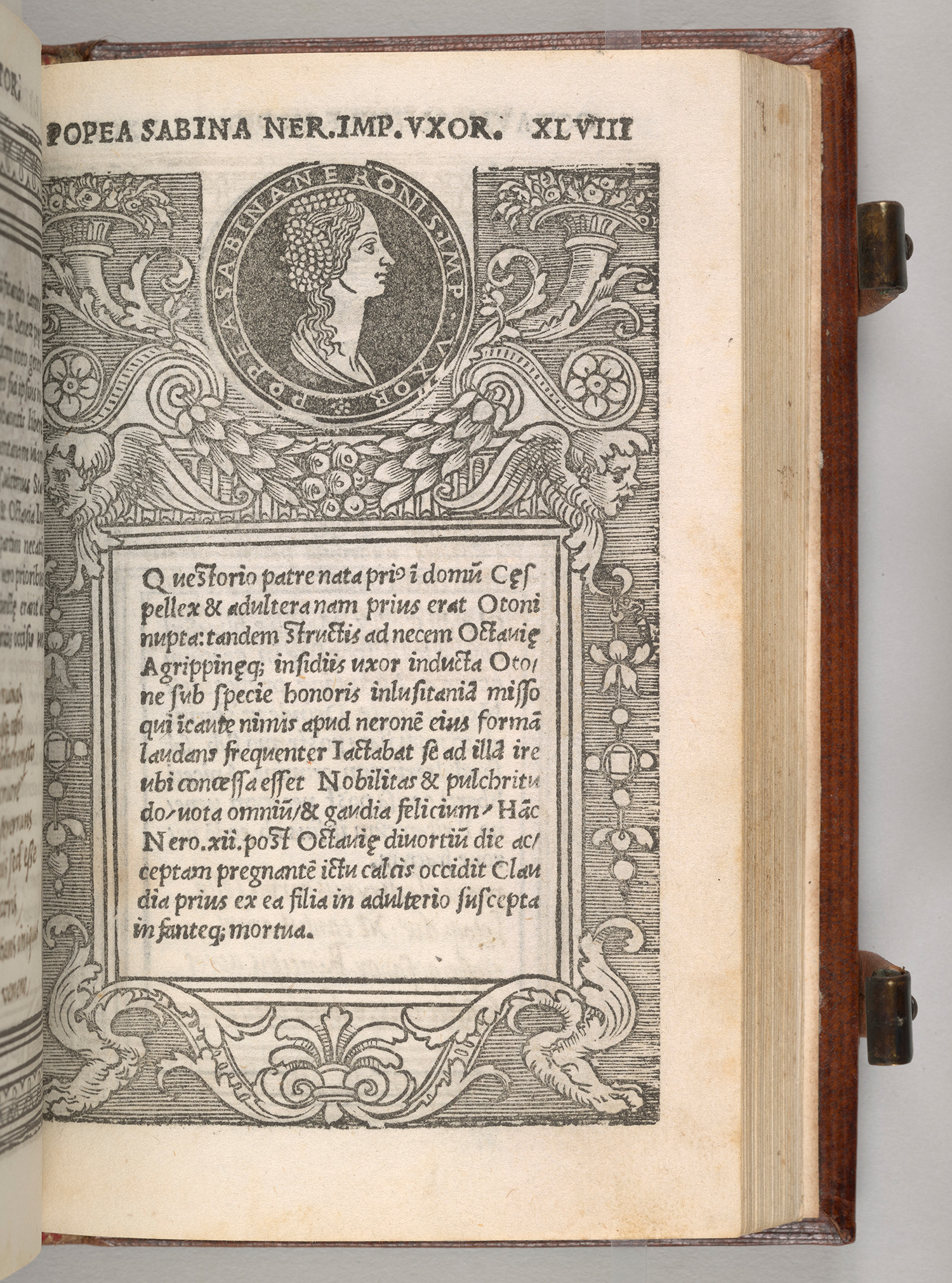Illustrated Precedents
Two compendia of historical figures from ancient Rome that circulated in the 16th century, Boccaccio’s De mulieribus claris (written in 1374, printed in 1473) and Andrea Fulvio’s Illustrium imagines (1517), include short biographies of Poppaea—enhanced with printed illustrations—that are faithful to Tacitus’s account. Boccaccio’s entry on Poppaea is illustrated with a woodcut depicting Nero’s fatal kick (fig. 1). Fulvio’s follows a different formula (fig. 2), pairing his Poppaea biography with a profile portrait that evokes Roman coinage. These texts certainly raised awareness of Poppaea in 16th-century circles, but their rather straightforward illustrations of her do not seem to have had any bearing on the School of Fontainebleau’s unique iconography.
Figure 1: Poppaea Sabina, from Giovanni Boccaccio, De claris mulieribus (Louvain, 1487), woodcut, 11.22 x 7.68 in. (28.5 x 19.5 cm), Newberry Library, Chicago (Call no. 9308)
